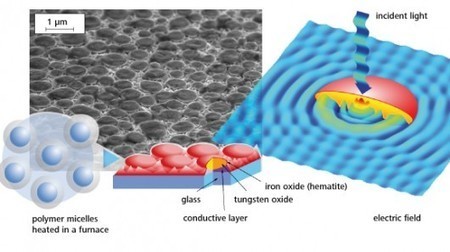"As nocturnal creatures, moths need to maximize how well they can see in the dark whilst remaining less visible to avoid predators. This ability to collect as much of the available light as possible and at the same time reflect as little as possible, has inspired Researchers at the Swiss Federal Laboratories for Materials Science and Technology (Empa) to design a new type of photoelectrochemical cell using relatively low cost materials."
Research and publish the best content.
Get Started for FREE
Sign up with Facebook Sign up with X
I don't have a Facebook or a X account
Already have an account: Login
 Your new post is loading... Your new post is loading...
 Your new post is loading... Your new post is loading...
|
|












